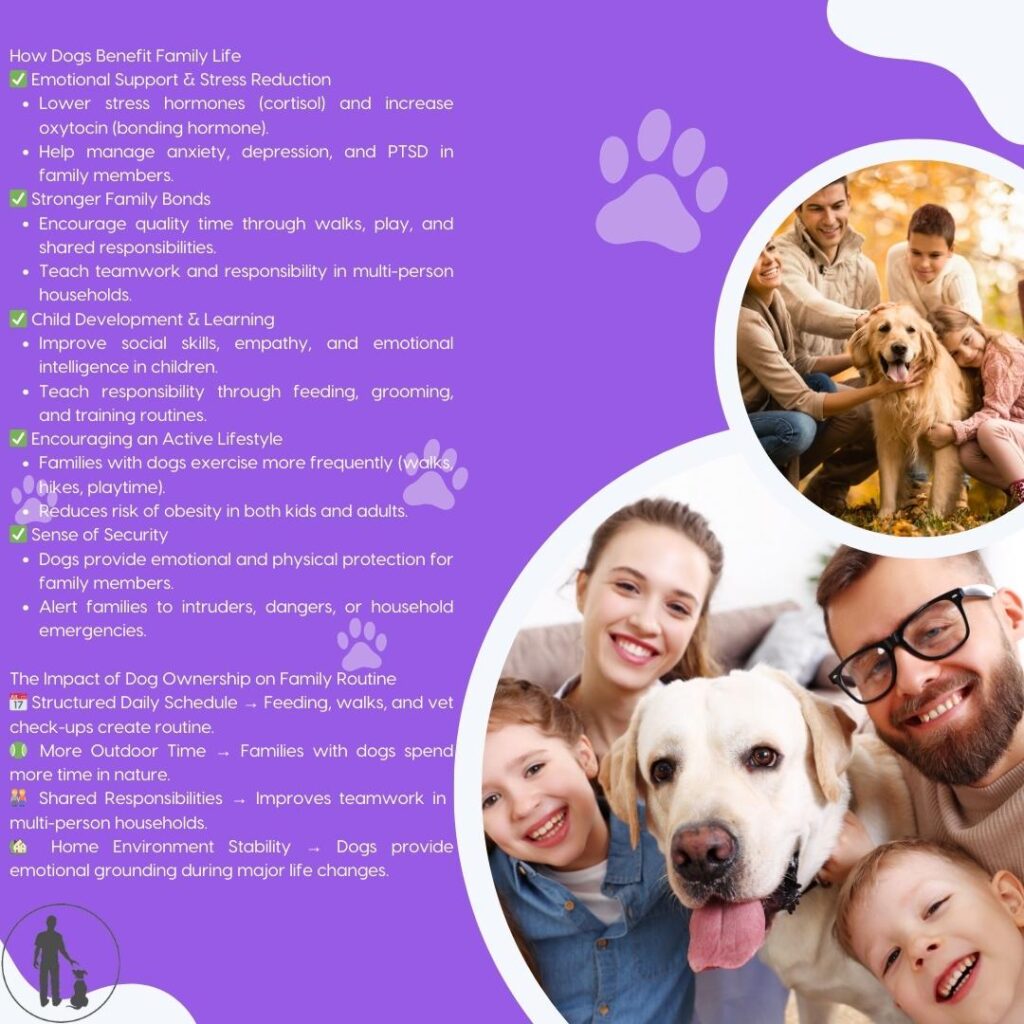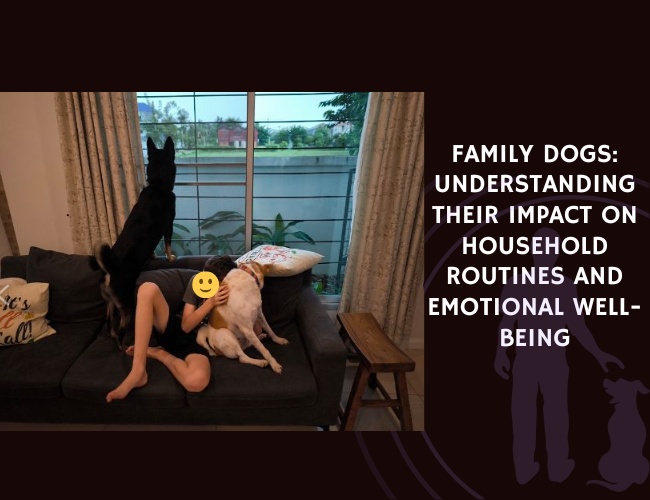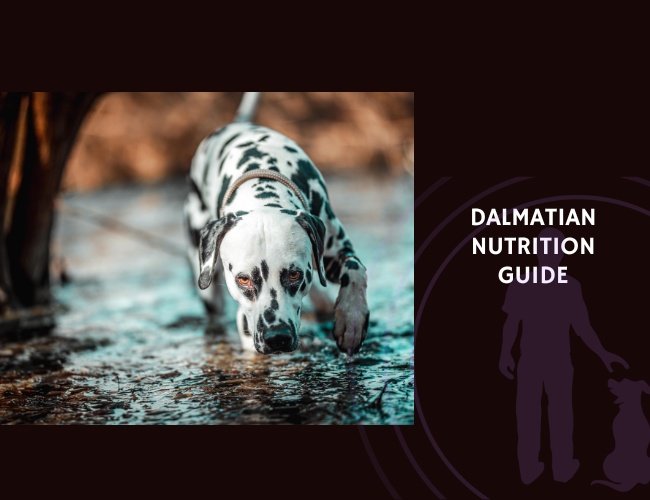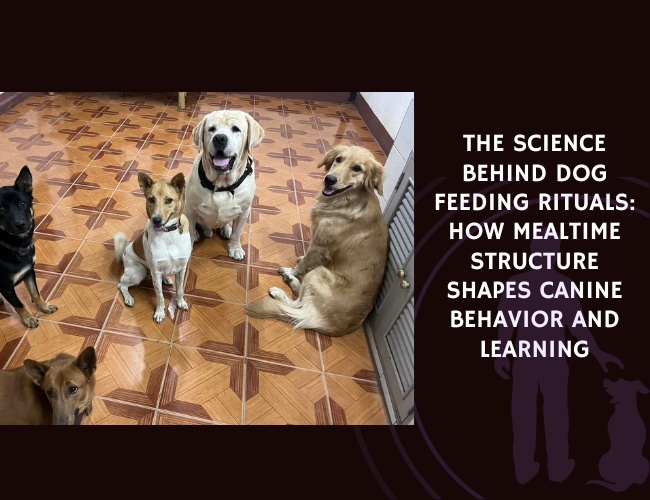Introduction to Dogs in Family Life
Historical Significance of Dogs as ‘Man’s Best Friend’
Dogs have been celebrated as ‘man’s best friend’ for centuries, and their historical bond with humans is profound. This deep-rooted connection dates back thousands of years when early humans domesticated wolves, leading to the loyal companions we cherish today. Initially, dogs played practical roles in hunting, herding, and guarding, proving indispensable for survival. Over time, their roles evolved, and they became treasured family members, symbolizing loyalty and companionship.
Overview of How Dogs Influence Family Dynamics and Well-being
Dogs significantly impact family dynamics and overall well-being. Their presence can alter the emotional atmosphere of a household, providing comfort and reducing stress. Families with dogs often experience improved mental health due to the automatic companionship dogs offer. The simple act of petting a dog can lower cortisol levels— a hormone associated with stress— and trigger the release of oxytocin, promoting happiness and relaxation.
Moreover, dogs foster a sense of routine and responsibility. Regular feeding times, walks, and medical check-ups create a reliable structure that can bring stability to family life. Sharing these responsibilities promotes teamwork and can improve communication among family members, mitigating household tension and enhancing bonding.
The Multifaceted Role of Dogs in Modern Family Structures
The role of dogs in modern family structures is multifaceted, affecting daily life in numerous ways. They can serve as playmates for children, often stimulating more physical activity and outdoor engagement. This increased activity benefits all family members by promoting healthier lifestyles and reducing sedentary behaviors.
Dogs also play an essential role in child development. They teach children valuable lessons in responsibility and empathy through daily care tasks like feeding and walking. This interaction encourages cognitive and social development, as children often talk to their pets and form a trusting bond.
Additionally, dogs contribute to the emotional security of the household. They have natural guarding instincts, offering physical protection and deterring potential intruders. More importantly, they provide emotional support during stressful times, detecting and responding to distress in family members, providing comfort and stability.
As we continue to explore the different aspects of dogs in family life, these bonds and routines will be further examined, highlighting the profound impact these loyal companions have on our daily lives.
Emotional Benefits and Mental Health Impact
Reducing Stress and Anxiety through Companionship
Dogs have an uncanny ability to act as natural stress relievers, providing companionship that helps to significantly reduce anxiety and stress among family members. Their unwavering loyalty and affectionate presence create a soothing impact, especially during moments of distress. Engaging with dogs through activities such as walking, playing, or simply petting can profoundly lower cortisol levels (a hormone associated with stress), making the household environment more tranquil and harmonious.
Enhancing Emotional Well-being through Oxytocin Release
Scientific research has illuminated how interactions with dogs contribute to the release of oxytocin, often referred to as the “love hormone.” This biochemical reaction fosters feelings of happiness, comfort, and emotional stability. The simple action of gazing into a dog’s eyes or stroking its fur can trigger this positive hormonal response, reinforcing the strong emotional bonds between dogs and their human family members. This bond not only elevates individual emotional well-being but also fortifies mutual trust and affection within the family unit.
Strengthening Family Bonding and Communication
Dogs serve as catalysts for family cohesion, promoting bonding activities and better communication among household members. Shared responsibilities like feeding, walking, and grooming the family dog necessitate coordination and cooperation, fostering a collaborative atmosphere. This shared caretaking promotes teamwork and can even help resolve conflicts, as dogs often act as neutral, comforting buffers during family disagreements. The presence of a dog encourages conversations, whether it’s planning the day’s pet-related activities or discussing behavioral training, thereby nurturing a more communicative family environment.
By integrating these aspects of dog companionship into family life, the emotional and mental health benefits become clearly evident. Families experience less stress, more joy, and stronger connections, creating a supportive and nurturing home atmosphere.
Moving forward, understanding the influence of dogs on child development will highlight how these pets contribute to teaching responsibility, improving cognitive and social skills, and even boosting physical health among children.
Dogs and Child Development
Teaching Responsibility and Routine Through Pet Care
Children learn numerous life skills by caring for a dog. From feeding and grooming to walking, these tasks teach kids the importance of routine and responsibility. Handling a dog’s daily needs can help children develop a strong sense of duty and accountability. By involving them in activities such as scheduling vet visits and maintaining a feeding timetable, parents instill the value of structure and reliability in their children.
Enhancement of Cognitive and Social Skills in Children
Dogs play a notable role in enhancing the cognitive and social skills of children. Interacting with dogs often includes verbal communications, such as giving commands or engaging in playful conversations. This nurtures verbal skills and improves social confidence. Moreover, children talking to their dogs and understanding their needs can build empathy and emotional intelligence, making them more sociable and empathetic individuals.
Playing and training sessions also provide intellectual stimulation. Kids learn problem-solving by figuring out how to teach a new trick or resolve behavioral issues. These interactions can positively impact a child’s cognitive development, ensuring that learning and fun go hand-in-hand with their furry friend.
Role in Improving Immune System Development and Reducing Allergies
Exposure to dogs from an early age has health benefits that extend beyond companionship. Studies have shown that children who grow up with dogs are less likely to develop allergies and asthma. Contact with dogs introduces children to various microbes early on, which boosts their immune systems. This exposure helps develop a more robust immune response by familiarizing their bodies with potential allergens, thereby reducing the likelihood of severe allergic reactions later in life.
Having a dog can also encourage a more active lifestyle, which further contributes to overall health and well-being. Regular outdoor playtime with a dog not only enhances physical health but also strengthens the immune system through increased physical activity and regular exposure to different environments.
Overall, the presence of a dog in a household significantly enhances a child’s development on various levels, from instilling discipline to fostering cognitive and social growth, while also providing numerous health benefits.
Next, we will explore how dogs shape family routines and lifestyle.
Influence on Family Routines and Lifestyle
Creation of Structured Daily Routines through Dog Care Responsibilities
Having a dog in the family demands a commitment to structured routines. Daily tasks such as feeding, walking, and grooming require a consistent schedule, which can foster a sense of organization within the household. This structured approach helps families, including children, understand the value of routine and responsibility. Regular walks and designated playtimes keep both dogs and family members active, while maintaining a structured routine can help mitigate stress and provide a sense of stability.
Increased Physical Activity and Outdoor Engagement
Families with dogs are naturally more inclined to spend time outdoors. Walks, playtime in the park, and other dog-related activities encourage physical exercise and outdoor engagement. This increase in physical activity can lead to numerous health benefits, such as improved cardiovascular health and weight management for all family members. Additionally, outdoor activities provide ample opportunities for families to bond and create memories, enhancing their overall well-being.
Impact on Family Travel Planning and Scheduling
Traveling with a dog requires careful planning and adjustments to accommodate the pet’s needs. From finding pet-friendly accommodations to ensuring the dog’s comfort during transit, families must take into account various factors that can impact travel schedules. Dogs can also influence the choice of travel destinations, as families seek out locations that offer dog-friendly amenities and activities. While this may limit spontaneity, it encourages families to plan more thoroughly and consider different aspects of their trips, ultimately leading to more memorable and enjoyable travel experiences.
Considering the influence of dogs on family routines and lifestyle, it’s clear that these loyal companions not only bring joy and affection but also help structure daily lives, promote physical activity, and influence travel plans in meaningful ways.
Protective Role in Family Security
Physical Security Benefits and Natural Guarding Instincts
Dogs have an innate ability to provide physical security to families. Certain breeds, such as German Shepherds, Dobermans, and Rottweilers, are renowned for their natural guarding instincts. These dogs can act as effective deterrents against intruders, thereby enhancing family security. Their acute senses of hearing and smell enable them to detect unusual activities, often before humans are even aware of them. This heightened vigilance can provide families with an extra layer of protection and peace of mind.
Dogs’ territorial behavior ensures that any strangers approaching the household are met with alertness and, if necessary, protective aggression. It’s important to note that while some breeds are naturally inclined towards guarding, proper training is crucial to ensure they can distinguish between genuine threats and harmless visitors. This balance is vital in maintaining a safe and welcoming home environment.
Emotional Protection and Comfort During Stressful Times
Beyond their physical guarding abilities, dogs offer substantial emotional protection to family members. Dogs are closely attuned to human emotions and can often sense stress or sadness, offering unwavering companionship and comfort. Interacting with a dog during stressful periods can trigger the release of oxytocin, a hormone associated with bonding and relaxation.
During challenging times, such as family conflicts or personal losses, the presence of a dog can provide much-needed emotional support. Their non-judgmental nature allows them to be a comforting presence, helping family members navigate through their emotions. This emotional bonding not only alleviates individual stress but also fosters a soothing home environment.
Detecting and Responding to Family Members’ Distress
Dogs possess an extraordinary ability to detect emotional and physical distress in their human companions. They are instinctively driven to offer comfort and support when a family member is in distress. This can be particularly beneficial for individuals suffering from mental health conditions like anxiety or depression, where the presence of a dog can significantly improve emotional stability.
For example, dogs have been known to recognize the onset of panic attacks in their owners and act to provide comfort, either by staying close or initiating physical contact. Additionally, therapy dogs are trained to assist individuals with specific needs such as post-traumatic stress disorder (PTSD) or autism, thereby enhancing family dynamics and offering critical emotional support.
By engaging in comforting behaviors, dogs help mitigate stress and anxiety, contributing positively to the overall well-being of all family members. Their role in detecting and responding to distress ensures they are not just pets, but integral members of the family unit.
As we delve further into the intricate relationship between dogs and their families, it’s clear that their contributions extend far beyond companionship, offering a blend of security and emotional well-being that enriches daily life.

Challenges of Dog Ownership
Dog ownership certainly brings emotional and developmental benefits to families, but it also comes with its own set of challenges. It’s crucial to recognize these challenges to ensure that both the family and the dog can lead happy and fulfilling lives.
Financial Considerations
Owning a dog is a long-term financial commitment. The initial cost of acquiring a dog, whether through adoption or purchase, can vary greatly. Beyond this, there are ongoing expenses that can add up quickly:
- Food: High-quality dog food is essential for a pet’s health and well-being. Depending on the size and breed, food expenses can range significantly.
- Medical Care: Regular vet visits, vaccinations, and preventive medications for flea, tick, and heartworm are necessary. Emergency medical situations can lead to significant unexpected costs.
- Supplies: This includes items like collars, leashes, beds, toys, and grooming supplies. These might seem minor but can collectively be a considerable expense over time.
- Training and Grooming: Training investments up front can prevent behavior issues later. Certain breeds also require regular professional grooming, which includes costs for services like haircuts and nail trimmings.
Time Commitment and Attention Needs
Dogs are social creatures that thrive on companionship and require a significant time investment. Families must be prepared for:
- Daily Exercise: Dogs need regular physical activity to stay healthy and happy. This can mean daily walks, playtime in the yard, or trips to the dog park.
- Training: Consistent training is crucial, especially for puppies. It involves teaching basic commands, house training, and socialization with other animals and humans.
- Affection and Attention: Dogs need affection and time from their owners. Lack of attention can lead to behavioral problems like anxiety or destructive tendencies.
Neglecting these needs can not only lead to a distressed pet but also create stress within the family, as behavioral issues like excessive barking or chewing can become common.
Potential Health Concerns and Lifestyle Adjustments
Dog ownership may also bring about health and lifestyle adjustments for the entire family:
- Allergies and Asthma: Some family members might have pet allergies or asthma, which can be aggravated by dog hair and dander.
- Health Risks: Dogs can sometimes carry parasites or diseases that can be transmitted to humans. Regular health checks and preventive care are essential to minimize these risks.
- Lifestyle Restrictions: Having a dog can limit spontaneous travel plans as families must make arrangements for dog care. This might mean taking fewer vacations, or ensuring that travel plans are dog-friendly.
Additionally, everyday lifestyle adjustments might include changes to home environments, such as securing valuable items that a teething puppy might chew on or ensuring the home is safe for an active dog.
Brief Transition
While the challenges of dog ownership can be daunting, understanding and preparing for them is crucial in fostering a harmonious and supportive family-dog relationship. Exploring the wide variety of dog breeds and their specific needs will guide families in making an informed decision, ensuring the best match for their lifestyle and living situation.
Choosing the Right Dog for Your Family
Matching Breed Characteristics with Family Lifestyle and Living Space
Selecting the perfect dog for your family involves matching breed traits with your family’s lifestyle and living conditions. Families with children may benefit significantly from breeds known for their friendly and gentle nature, such as Labrador Retrievers, Golden Retrievers, Beagles, and Cavalier King Charles Spaniels. These breeds are often patient, affectionate, and playful, qualities that mesh well with the energy and curiosity of young kids.
For families that love outdoor adventures, high-energy breeds like Border Collies, Australian Shepherds, Boxers, and Siberian Huskies can be an excellent match. These dogs thrive on physical activity and enjoy participating in family hikes, runs, and play sessions, effectively channeling their boundless energy.
On the other hand, families living in apartments or smaller homes might prefer breeds that adapt well to limited space and require moderate exercise. Breeds like French Bulldogs, Pugs, Shih Tzus, and Dachshunds are known for being comfortable in compact living arrangements while still providing companionship and joy to their families.
Considerations for Families with Children or Other Pets
Integrating a dog into a family with children or other pets requires careful consideration. Some breeds coexist peacefully with other pets, while others with strong prey drives may need gradual introductions and supervision. It’s essential to choose a breed with a temperament that aligns well with both existing pets and the family’s dynamics.
When introducing a new dog to a household with other pets, positive reinforcement and patience are crucial. Gradual introductions can help ensure a smooth transition and foster harmonious relationships among all animals in the home. Dogs like Golden Retrievers and Beagles are often known for their friendliness and ability to get along with other pets.
Dogs can also play a valuable role in blended families, providing comfort and stability to children adjusting to new family structures. Their presence can help smooth transitions and create a loving and cohesive environment, offering emotional support during potentially challenging times.
Understanding Different Breeds’ Energy Levels and Care Requirements
Different dog breeds have varying energy levels and care needs, which is an important factor to consider when choosing a family dog. High-energy breeds, such as Border Collies and Australian Shepherds, require ample physical and mental stimulation. These dogs are best suited for active families that can dedicate time to exercise, training, and interactive play.
Conversely, low-energy breeds such as Bulldogs and Basset Hounds are more accommodating to a laid-back lifestyle. These breeds are content with shorter walks and less strenuous activity, making them ideal for families with a more sedentary routine or limited time for extensive exercise.
Moreover, understanding each breed’s grooming and medical care requirements is vital. Breeds with long coats, like Shih Tzus and Golden Retrievers, need regular grooming to prevent matting and maintain healthy fur. On the other hand, breeds like Pugs and French Bulldogs may have specific health considerations due to their brachycephalic (short-nosed) structure, requiring attentive care to avoid respiratory issues.
Selecting a dog that matches your family’s lifestyle, living space, and care capacity not only ensures the well-being of the dog but also enhances the overall family experience, creating a deeper bond and a happier home environment.
Cultural Perspectives and Future Outlook
Various Cultural Attitudes Towards Dogs in Family Settings
Dogs occupy different roles and meanings across cultures. In Western cultures, dogs are often viewed as integral family members, sharing in daily life and even being included in family portraits. This deep integration can enhance family dynamics by fostering strong emotional bonds and encouraging shared activities. Conversely, in some Eastern cultures, dogs might be more valued for practical roles like guarding or herding, reflecting a utilitarian view that still acknowledges their importance.
In countries like the United States, over 60% of pet owners consider their dogs as family members, with studies showing that families with dogs report higher happiness and lower stress levels. This acceptance and adoration of dogs can be seen in the widespread consumer culture around pet care, signifying their esteemed status.
In certain cultures, dogs might not occupy the same intimate family space. For example, in some regions of the Middle East, dogs are often viewed more conservatively due to religious and cultural beliefs. Understanding these varying perspectives is crucial, as it influences how families approach dog ownership and integrate dogs into their lives.
Statistical Insights on Dog Ownership Benefits
Dog ownership brings a multitude of benefits, many of which are supported by statistical evidence. Studies have consistently shown that dog owners experience:
- Reduced Stress and Anxiety: Interaction with dogs is proven to lower cortisol levels, the body’s primary stress hormone, and release oxytocin, the hormone associated with bonding and affection. This creates a calming effect, beneficial for overall mental health.
- Increased Physical Activity: Families with dogs engage more in outdoor activities, promoting a healthier lifestyle. Regular walks and playtime contribute to reduced sedentary behavior.
- Improved Social Skills: Dogs act as social catalysts, encouraging interactions and building stronger community ties. Children especially benefit by developing greater social confidence.
- Enhanced Emotional Support: Dogs provide unconditional love and support, which is particularly beneficial during stressful and challenging times. Families report higher happiness levels with dogs in their homes.
Emerging Research on Long-Term Impacts of Growing Up with Dogs

Future research is set to delve deeper into the long-term impacts of growing up with dogs. One emerging area is the study of dog ownership’s effect on childhood emotional intelligence. Early exposure to dogs is linked to better development of empathy, responsibility, and social skills in children, setting a foundation for healthier interpersonal relationships throughout life.
Another promising field of research focuses on the mental health benefits extending into adulthood. Long-term studies may reveal that children who grow up with dogs are better equipped to handle stress and anxiety, having experienced the emotional grounding and companionship dogs provide. The development of better immune systems and reduced allergies in dog-exposed children remains a significant finding, suggesting that the health benefits of dog ownership start early and extend throughout life.
Engaging with these research areas can help families make informed decisions about dog ownership, understanding not just the immediate joys and challenges but also the long-term implications for family health and well-being.









